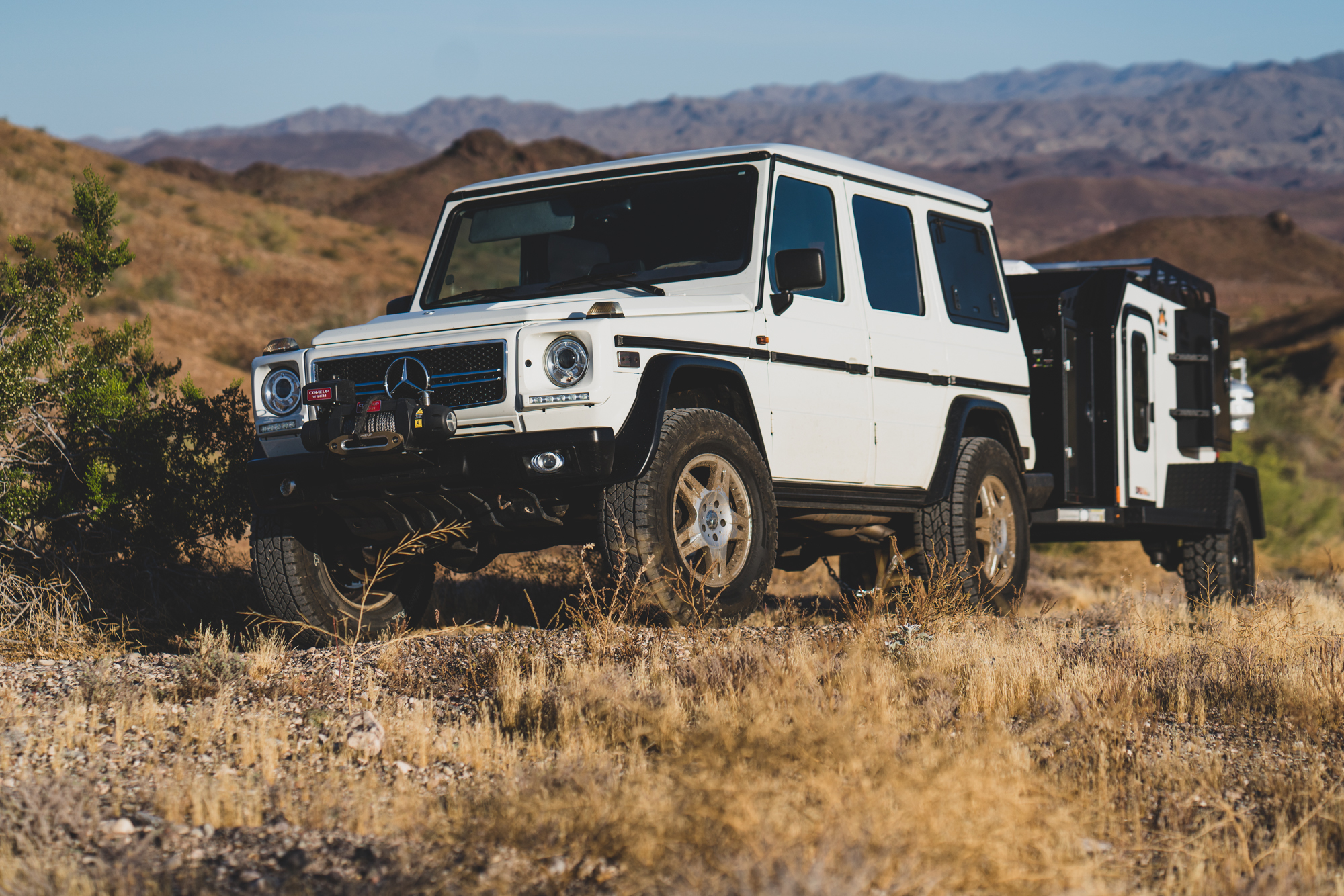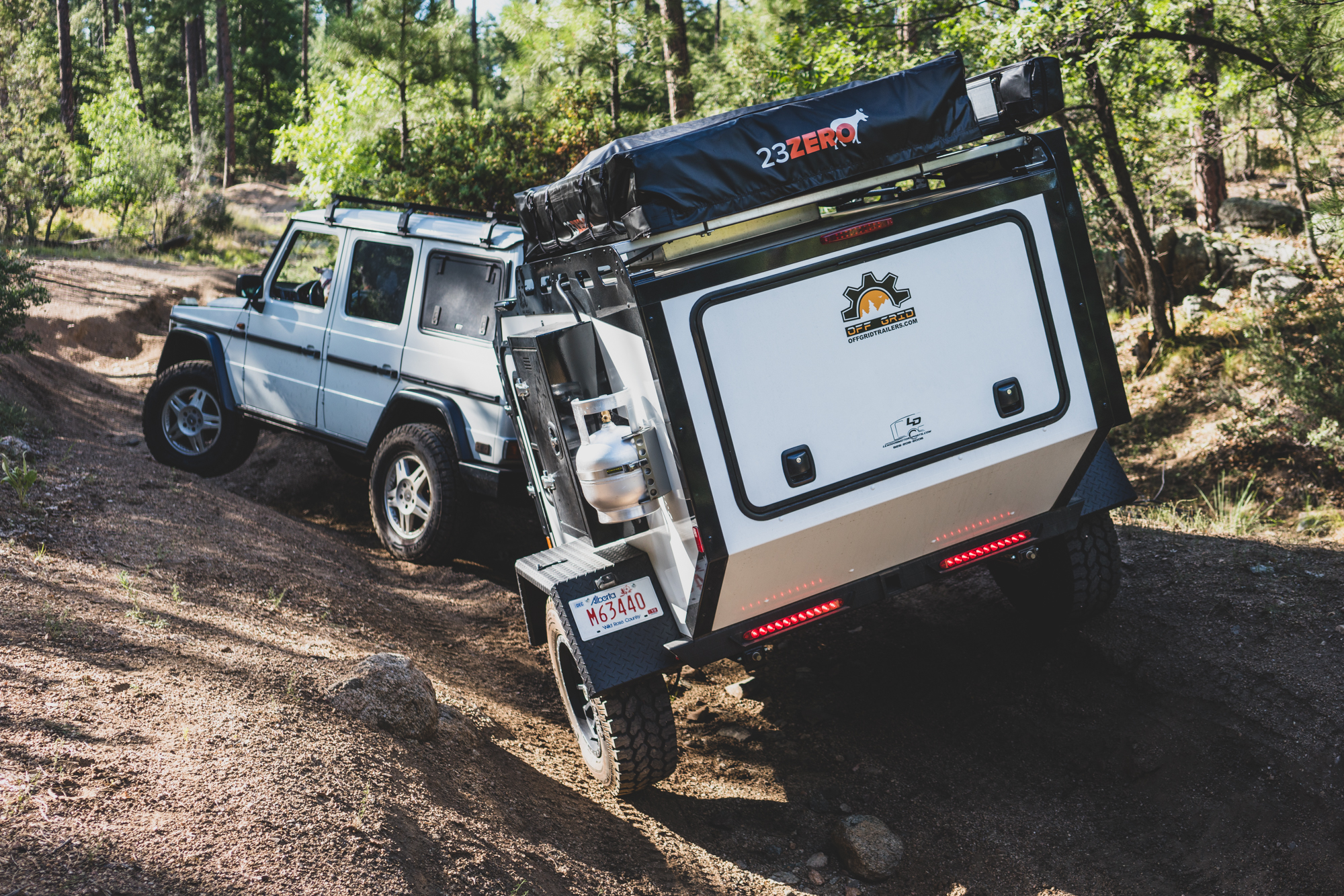Overlanding is often about getting remote, and being able to stay longer in the back of beyond. One way to facilitate long periods in the backcountry is with an overland trailer, and there are few companies that make one as suitable as the Off Grid Expedition 2.0. We try to be reserved with our praise, but this trailer is one of the best overland trailers on the market, its predecessor winning the Overland Journal Editor’s Choice award.

The Off-Grid is one of my favorite trailers, which resulted in an opportunity to use the new Expedition 2.0 model for most of 2019, including dozens of nights out camping and exploring with the trailer behind my trusted G-Wagen. Before I get into the specifics and my impressions on the new model, it is most important for me to give some credit to the Off-Grid company itself. For the Overland Journal test, we found a few areas for improvement with the Expedition 1.0, and instead of griping about it, the Off Grid team went about correcting all of our suggested areas for improvement, including completely redesigning the body. A company that is continuously improving is worth noting.
Key Features of the Expedition 2.0:
- All metal construction (i.e. no wood or plastic)
- Mold and mildew resistant
- 31 gallons of water
- On-demand hot water shower
- Dual group 31 battery system and solar / inverter options
- Excellent off-road performance
- High output propane heater (6500 BTU)
- Fully insulated for four season use
- Large diameter electric brakes (12″ drums)
- Extensive storage inside and at the rear of the trailer

Towing the Off Grid Trailer
When I first picked up the trailer, it required a 300 mile tow back to our Prescott offices. The included highway, interstate, twisting mountain roads, and some fourwheeling back to a campsite along the Colorado River. On the road, the trailer is extremely stable and predictable, benefiting from the Timbren independent suspension system. This system is well-proven for both reliability and serviceability, also allowing for alignment corrections and modest compression / rebound travel. Most important is the addition of massive 12-inch electric drum brakes with a Hopkins break away system (with battery backup). This resulted in excellent stopping characteristics, particularly important in the mountains and on long grades.

On the dirt, the trailer continues to excel, demonstrating excellent side slope stability (we tested it to 32 degrees) and coupler compliance through crossed axle terrain. We did find the draw bar to be about 5 inches too short for the G-Class tow vehicle, the spare tire of the vehicle risking contact with the spare on the Off Grid. Be sure to spec. this draw bar length correctly for the tow vehicle. Notably, the distance from the ball to the trailer wheel hub was nearly the same as the G wheelbase, which is ideal for trail maneuverability. If that length is too long, the trailer will not track the tow vehicle in a turn. As a result, it might be better to opt out of the trailer spare to allow proper angle of approach.

The trailer completed all of our test track obstacles without complaint, including the break over and slope-holding tests. The Timbren suspension has been a pleasant surprise in these scenarios. Once the speeds increase and larger suspension events are present, the suspension trails the performance of the long-travel offerings. However, stability remains excellent and even large event resulted in minimal bouncing of the unit. The trailer is also lighter than expected, which helped considerably on the technical trails and climbs. Departure angle and ground clearance are both excellent at 50 degrees and 21 inches respectively. The trailer brakes also passed out full lockup test, which is critical in tight confines, allowing the driver to slide or drag the trailer around sharp turns or obstacles.


As a Camper
In today’s competitive trailer market, being able to sleep inside is a serious differentiator. For me personally, one of the advantages of the trailer is instant camp. For the Off Grid, I can be in bed from the driver’s seat in less than a minute. Why is this important? Weather! There are few luxuries like being able to jump into the trailer when it is pouring rain. No set-up required. The enclosure also allows for full four-season use. The Off Grid is designed by Canadians and built in Canada- they know cold. As a result, the entire enclosure is insulated, including R10 walls and floors. When that isn’t enough, the 6500 BTU heater will make it feel like Costa Rica inside.

The sleeping area is comfortable, and has more storage than any competitive model I have tested. There is a control panel with power outlets (including USB) and the heater controls. Minor gripe, but the panel could benefit from a cover to obscure the bright LEDs (or have a night mode switch that shuts off the illumination). I would also like to see privacy and light shades on the windows, like the ones from Tern Overland.
One of the most important attributes of the teardrop trailer is the bed, and Off Grid did not seem to skimp on the mattress with a four-inch, high-density memory foam unit. There is also a folding couch / mattress option, which really allows for interior living. Dimensionally, the interior is very spacious, but a few more inches of height would make changing and moving about the interior for my 6’1″ frame.

The trailer stabilizes with both the front tongue jack and the rear screw jacks. I was even able to lift the rear tire off the ground to facilitate changing a tire.
Camping isn’t just about sleeping, so we tested all of the other systems, including the shower and full-featured kitchen. The kitchen is thoughtfully placed on the awning side and utilizes a clever drop down design, hiding a complete Dometic system of sink and two burner stove. The sink is plumed to both the cold and hot water, which is a real water-saver for washing dishes. We really liked the stove, which was at a perfect height for taller travelers. The Dometic fridge is on the other side of the galley on a full extension slideout. Fortunately, they did not bisect the nose box, so there is plenty of air space to allow for efficient fridge operation in all but the hottest environments.

The shower is also a nice touch, making strong pressure under lower flow rates. It is an on demand propane style, which takes a little bit of adjustment and experience to optimize. However, once that learning curve is obtained, it is both efficient and luxurious. It would be neat to see an optional enclosure that mounts to the side of the rack like the Quick-en-Suite unit from Australia.


Conclusions
In summary, Off Grid has made one of my favorite trailer even better. They addressed several of our suggestions from the first test and also improved it in ways we didn’t expect. Essentially, they redesigned the entire trailer from version one (even though it looks nearly identical). The entire frame is now laser cut and formed for weight savings and serviceability. It seems like everything is powder coated, and you can now wrap the trailer with a design of your choosing.
Overall, I have been exceedingly impressed by the construction quality of the Expedition, and I did not experience a single failure during my seven months with the trailer. And if a problem does arise, the trail comes with an industry-leading 5-year warranty. It won our Editor’s Choice for version 1.0, and keeps it for version 2.0. The Off Grid is truly ready for your next expedition. . . offgridtrailers.com | $26,900





